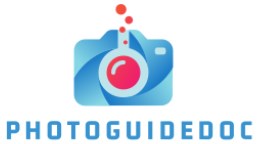Gone are the days of grainy passport photos and frustrating studio appointments. The digital age has revolutionized document photography, introducing user-friendly online platforms that empower you to capture professional-quality images from the comfort of your home. This article explores the innovative features of these platforms, highlighting AI-powered background removal, automatic size adjustments, and real-time feedback on facial expressions. With these advancements, creating flawless passport and visa photos becomes accessible and stress-free, allowing you to focus on the thrill of upcoming travels.
Background Information
The transition from traditional paper-based document management to digital solutions has been a gradual but transformative process. In the early stages, document digitization primarily involved basic scanning technologies that aimed to replicate physical documents into digital formats. However, as the need for more sophisticated document handling increased, the focus shifted towards refining online document photography technologies.
One of the driving forces behind this shift was the growing demand for efficiency and accessibility in document management. Traditional methods often proved time-consuming and error-prone, leading to the exploration of technologies capable of automating and optimizing various aspects of document processing.
- The emergence of online document photography was closely tied to the evolution of digital cameras and imaging sensors. As the resolution and capabilities of these devices improved, so did the quality of document images captured for digital storage. Simultaneously, advancements in computer vision and image processing algorithms paved the way for more accurate and reliable extraction of information from these digital images.
The rise of remote work and the need for seamless collaboration further fueled the development of online document technologies. Users sought solutions that allowed them to share, edit, and store documents effortlessly, irrespective of geographical constraints. This prompted the integration of cloud-based platforms and mobile applications, creating a more interconnected and accessible ecosystem for document management.
The intersection of various technological domains, including optics, image processing, artificial intelligence, and networking, has played a crucial role in shaping the landscape of online document photography. Understanding this background is essential for appreciating the subsequent improvements in image quality, document recognition, security measures, and integration with cloud and mobile technologies discussed in the subsequent sections of this paper. As we delve into these advancements, it becomes evident that online document photography has evolved from a basic digitization tool to a sophisticated and integral component of modern document management systems.
Improvements in Image Quality
The quest for optimal image quality in online document photography has been a continuous journey, driven by the need for clear and accurate representation of documents in digital form. Several key advancements have contributed to the enhancement of image quality:
- High-Resolution Cameras: The evolution of digital imaging devices, including cameras and smartphones, has seen a remarkable increase in resolution. High-resolution cameras equipped with advanced optics capture fine details, ensuring that text and graphics in documents are reproduced with clarity. This improvement is particularly crucial for preserving the legibility of small fonts and intricate details present in various types of documents.
- Enhanced Image Processing Algorithms: Image processing algorithms have become more sophisticated, allowing for the correction of distortions, removal of artifacts, and optimization of overall image quality. Techniques such as noise reduction, color correction, and edge enhancement play a pivotal role in ensuring that document images are visually appealing and faithfully represent the original content.
- Improved Lighting Conditions: Lighting is a critical factor in capturing high-quality document images. Advances in LED and other lighting technologies have enabled the development of systems that provide consistent and optimal illumination for document photography. Uniform lighting reduces shadows and enhances contrast, contributing to overall image clarity.
- Dynamic Range Optimization: Document photography often involves capturing documents with varying levels of contrast and brightness. The implementation of dynamic range optimization techniques ensures that both dark and bright areas in a document are well-exposed, preventing loss of information in areas with extreme contrast.
- Real-time Image Enhancement: Some modern document photography systems employ real-time image enhancement features. These features adjust parameters such as sharpness, brightness, and contrast on the fly, allowing users to capture high-quality images even in challenging conditions.
Collectively, these improvements in image quality not only contribute to the aesthetic appeal of digitized documents but also serve a functional purpose in supporting subsequent document recognition and processing stages. As online document photography continues to evolve, ongoing research and innovation in imaging technologies promise further refinements in image quality, ensuring that digital representations faithfully preserve the nuances of diverse types of documents.
Document Scanning and Recognition
The advancements in document scanning and recognition technologies have been instrumental in automating and streamlining the conversion of physical documents into digital formats. Key developments in this area include:
- Optical Character Recognition (OCR): OCR technology has undergone significant improvements, enabling accurate extraction of text from document images. Modern OCR algorithms leverage machine learning and neural networks to recognize text in various fonts, languages, and layouts. This allows for the efficient conversion of scanned documents into editable and searchable digital text.
- Intelligent Document Processing (IDP): Beyond simple text extraction, IDP systems incorporate advanced machine learning techniques to comprehend the structure and content of documents. This facilitates the extraction of meaningful information, such as key data points, tables, and forms, from diverse document types. IDP contributes to the automation of data entry and document categorization processes.
- Multi-language Support: Recognizing the global nature of document management, contemporary document recognition systems offer robust support for multiple languages. This includes not only recognition of characters but also understanding the context and semantics of the text in different linguistic environments.
- Adaptive Learning Models: Machine learning models used in document recognition have become adaptive and self-learning. These models continuously improve their accuracy by learning from large datasets, ensuring better performance over time. Adaptive learning helps address challenges posed by variations in document layouts and content structures.
- Document Layout Analysis: Document layout analysis plays a crucial role in recognizing the spatial arrangement of elements within a document, such as headings, paragraphs, and images. Advanced algorithms can accurately identify and understand document structures, enhancing the precision of text extraction and data recognition.
- Integration with Data Validation: To enhance the reliability of extracted data, modern document recognition systems often integrate with data validation processes. This involves cross-referencing extracted information with external databases or predefined rules to ensure accuracy and integrity.
| OCR Technology | Accuracy (%) | Key Features |
| Traditional OCR | 85-90 | Basic text extraction capabilities |
| Machine Learning OCR | 90-95 | Improved accuracy through training on datasets |
| Neural Network OCR | 95+ | High accuracy, adaptive learning capabilities |
| Cloud-Based OCR | 90-95 | Remote processing, scalability |
Authentication and Security
In the realm of online document photography, ensuring the authenticity, integrity, and confidentiality of digital documents is paramount. Recent advancements in authentication and security measures have addressed these concerns comprehensively.
Authentication measures have evolved beyond traditional methods, incorporating cutting-edge technologies to establish the legitimacy of digital documents and users. Notable developments include:
- Biometric Authentication: The integration of biometric authentication methods, such as fingerprint recognition, facial recognition, and iris scanning, enhances the security of document access. Biometric data, being unique to each individual, provides a robust and convenient means of verifying the identity of users accessing sensitive documents.
- Watermarking: Digital watermarking techniques have become more sophisticated, allowing for the embedding of invisible and unique identifiers within document images. Watermarks serve as a tamper-evident feature, enabling users to verify the authenticity of a document and detect any unauthorized alterations.
- Digital Signatures: The use of digital signatures, based on public-key cryptography, ensures the integrity and origin of digital documents. Digital signatures provide a way to verify that a document has not been altered since it was signed and that the signature is legitimate, thereby establishing trust in the document’s authenticity.
Security measures extend beyond user authentication to safeguard the transmission and storage of digital documents. Encryption, secure transmission protocols, and access controls are integral components of ensuring document security:
- End-to-End Encryption: The adoption of end-to-end encryption protocols ensures that the content of digital documents remains confidential during transmission. This means that only the intended recipient can decrypt and access the document, mitigating the risk of unauthorized interception.
- Secure Socket Layer (SSL) and Transport Layer Security (TLS): These cryptographic protocols secure data transmission over networks, including the internet. SSL and TLS protocols encrypt data between the user’s device and the server, safeguarding document content from potential eavesdropping or man-in-the-middle attacks.
- Access Controls and Permissions: Implementing granular access controls ensures that only authorized individuals can view, edit, or share specific documents. Role-based access and permissions management add an extra layer of security by restricting user actions based on their roles within an organization.
In summary, advancements in authentication and security measures have significantly strengthened the trustworthiness of online document photography systems. By integrating biometric authentication, watermarking, digital signatures, and robust encryption protocols, these technologies provide a secure environment for the creation, transmission, and storage of digital documents, instilling confidence in users who rely on these systems for managing sensitive information.

